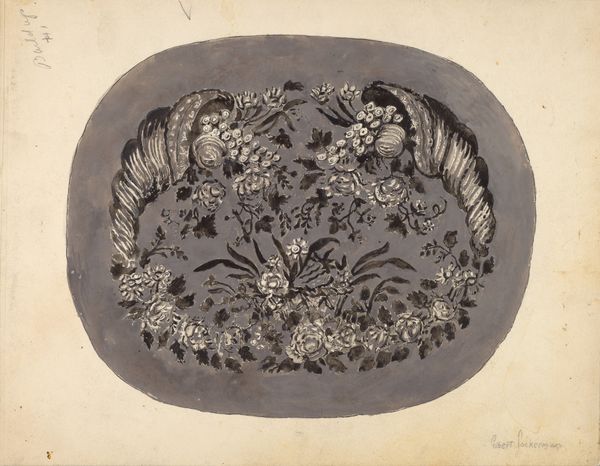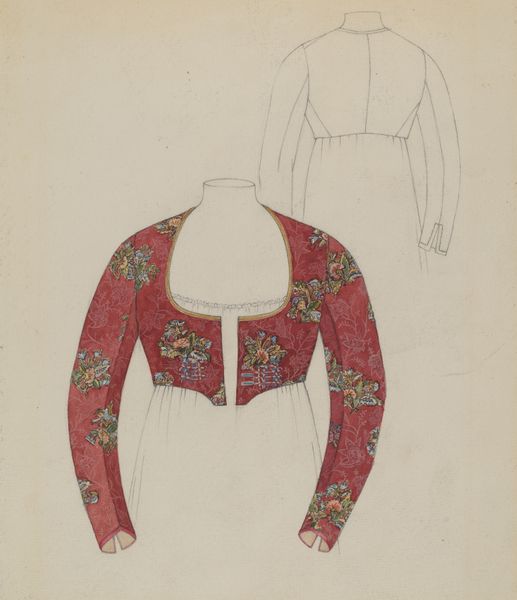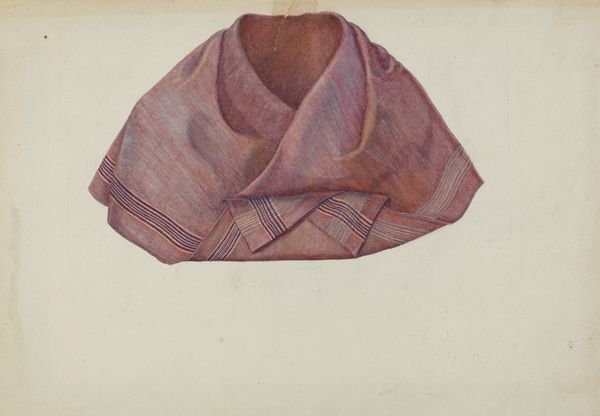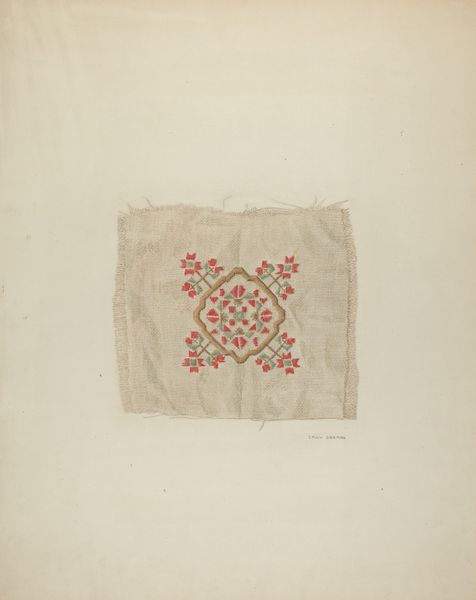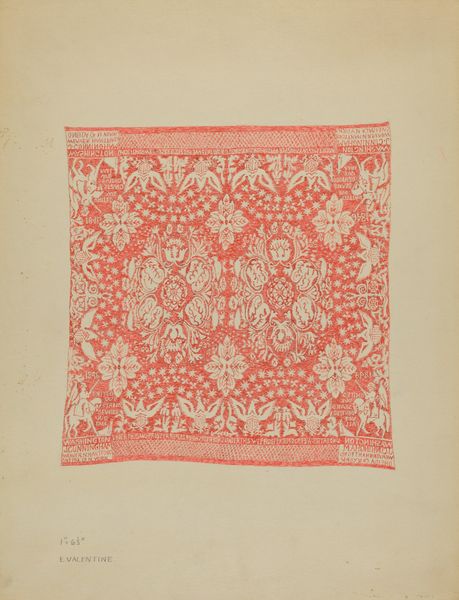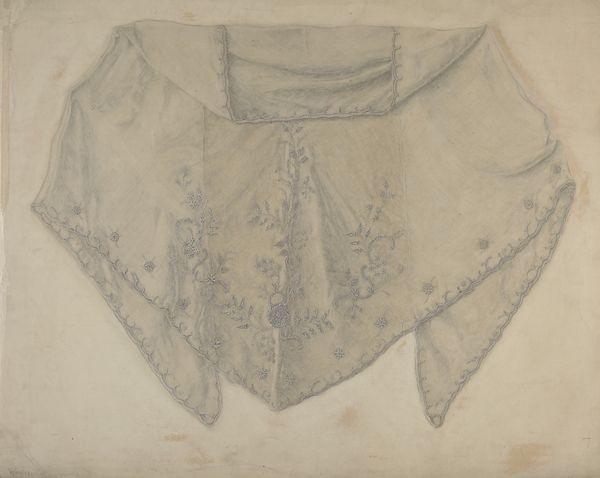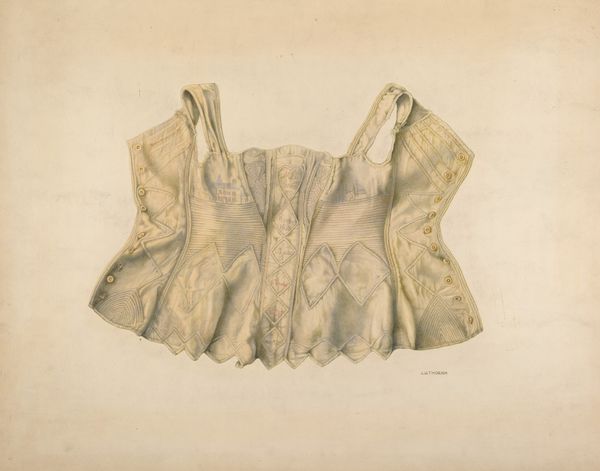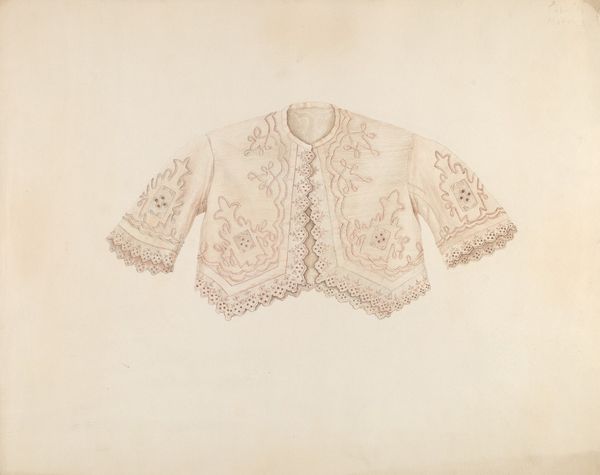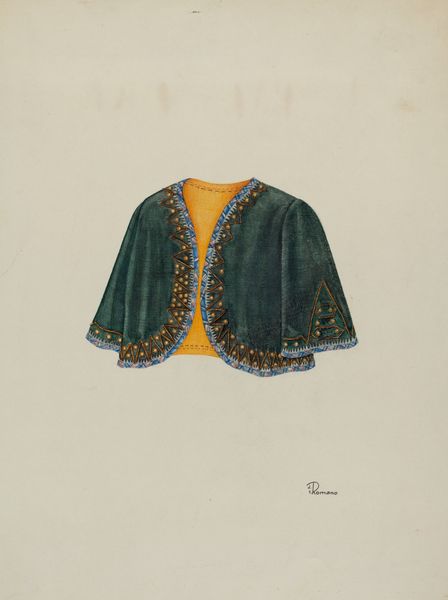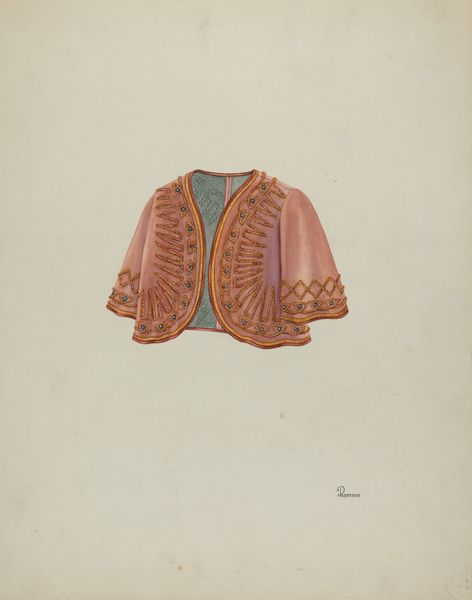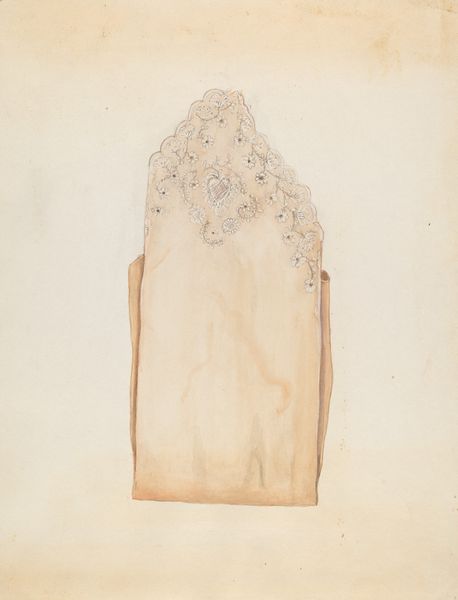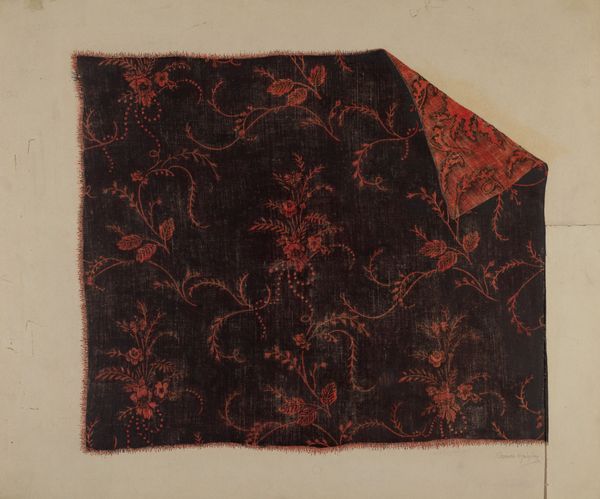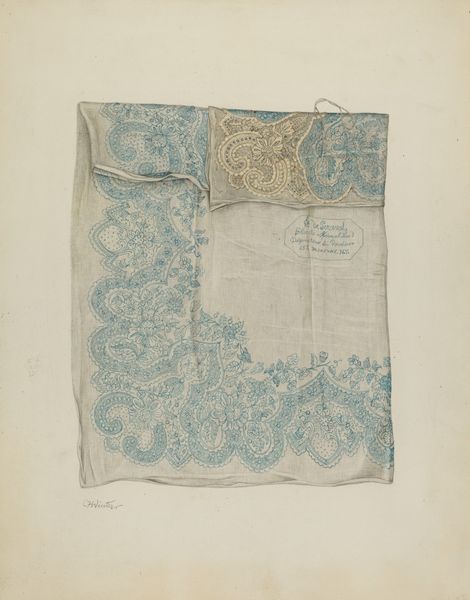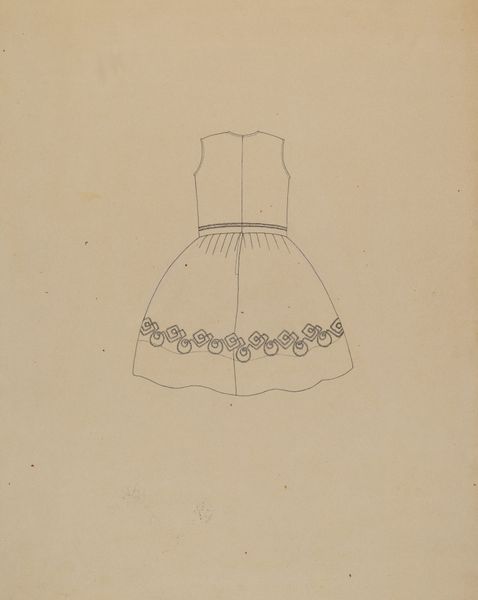
drawing, textile
#
fashion design
#
drawing
#
fashion mockup
#
textile
#
collage layering style
#
fashion and textile design
#
fashion based
#
historical fashion
#
clothing photo
#
textile design
#
decorative-art
#
fashion sketch
#
clothing design
Dimensions: overall: 22.9 x 27.8 cm (9 x 10 15/16 in.) Original IAD Object: 11" long; 20 1/4" wide
Copyright: National Gallery of Art: CC0 1.0
Curator: Looking at this image of “Child’s Cape,” made around 1937 by Gladys C. Parker, what's your first impression? Editor: A rather charming piece! The meticulous layering, that repetitive floral pattern… it creates a delicate, almost fragile effect, doesn't it? Curator: It does. Parker’s skill in conveying textile design through drawing is notable. The meticulous hatching suggests the texture of the fabric, almost like pointillism. Editor: But more than that, consider the societal context. Fashion design, particularly for children, reflected a rising middle class and increasing attention to youth culture in the interwar period. Curator: Precisely. And the formal elements amplify this. The soft coral hue and floral ornamentation create an atmosphere of innocent grace, quite appropriate for its intended wearer. Editor: However, there's a tension here. This rendering also serves as a professional fashion mockup. How might it have been circulated, and what economic forces shaped its creation and potential adoption? Was it intended for mass production? Curator: The precision and clarity of line suggest an intent for wider dissemination, whether for commission or potential commercial ventures. The formal approach also highlights universal ideas of beauty and style transcending the mundane and commercial. Editor: True, but let's also think about the politics of display. How does presenting this design in a museum reframes it? From utilitarian object to an artwork divorced from its original context? Curator: That is a critical point. Yet, considering the textile qualities portrayed through the drawing itself – the subtle play of light, the suggestion of volume – can offer a deeper understanding of the design. Editor: Undoubtedly. But my perspective underscores how this piece acted within a specific economy and reflects broader historical shifts. I view this work not in isolation, but in terms of historical movements and how these designs engage in creating social distinctions. Curator: It strikes a balance between social consideration and aesthetic appreciation. We get both sides, don’t we? Editor: Precisely; and that balance perhaps helps us better see and reflect on what Parker created and how her era valued it.
Comments
No comments
Be the first to comment and join the conversation on the ultimate creative platform.
